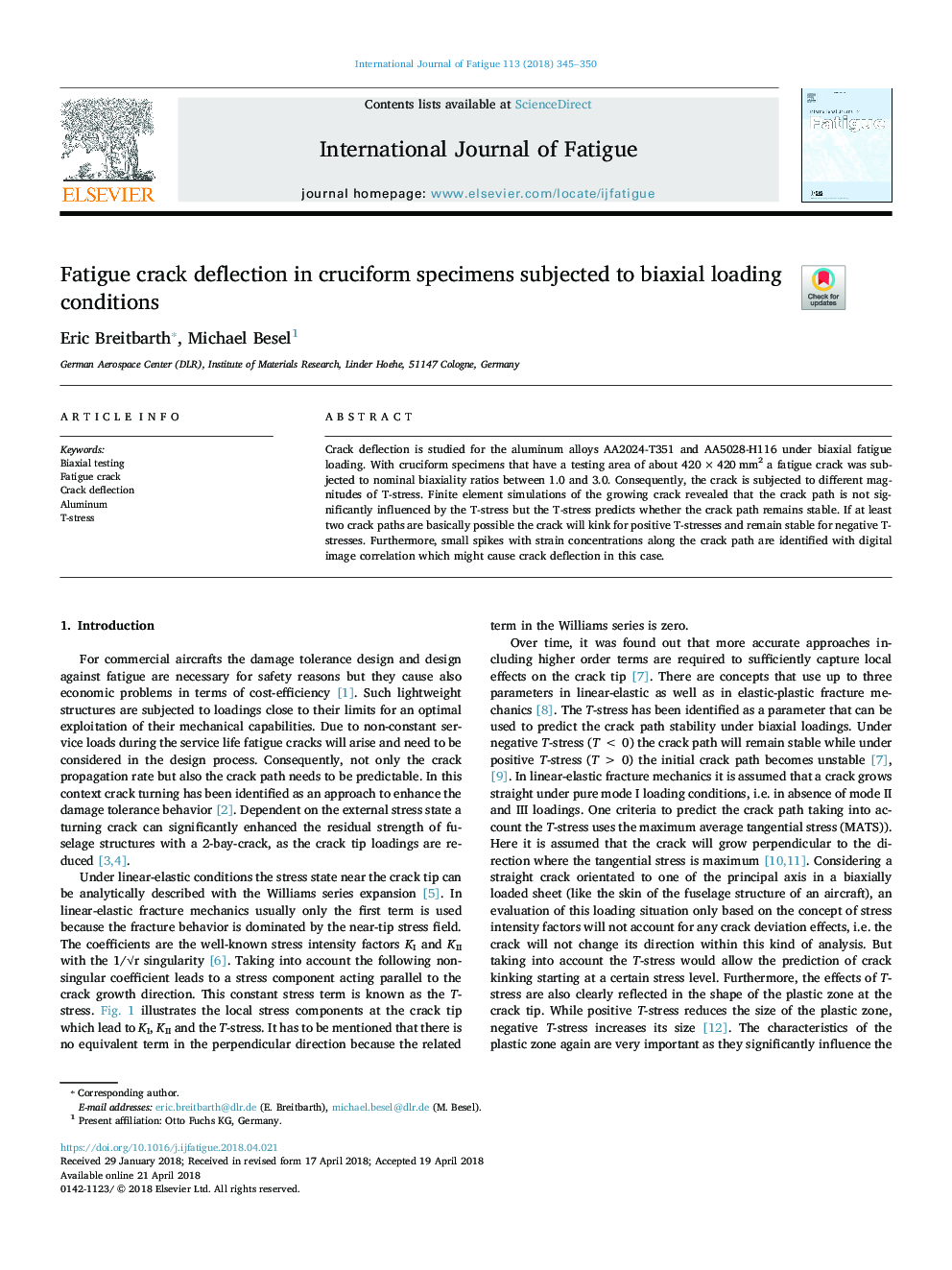| Article ID | Journal | Published Year | Pages | File Type |
|---|---|---|---|---|
| 7171409 | International Journal of Fatigue | 2018 | 6 Pages |
Abstract
Crack deflection is studied for the aluminum alloys AA2024-T351 and AA5028-H116 under biaxial fatigue loading. With cruciform specimens that have a testing area of about 420â¯Ãâ¯420â¯mm2 a fatigue crack was subjected to nominal biaxiality ratios between 1.0 and 3.0. Consequently, the crack is subjected to different magnitudes of T-stress. Finite element simulations of the growing crack revealed that the crack path is not significantly influenced by the T-stress but the T-stress predicts whether the crack path remains stable. If at least two crack paths are basically possible the crack will kink for positive T-stresses and remain stable for negative T-stresses. Furthermore, small spikes with strain concentrations along the crack path are identified with digital image correlation which might cause crack deflection in this case.
Related Topics
Physical Sciences and Engineering
Engineering
Mechanical Engineering
Authors
Eric Breitbarth, Michael Besel,
